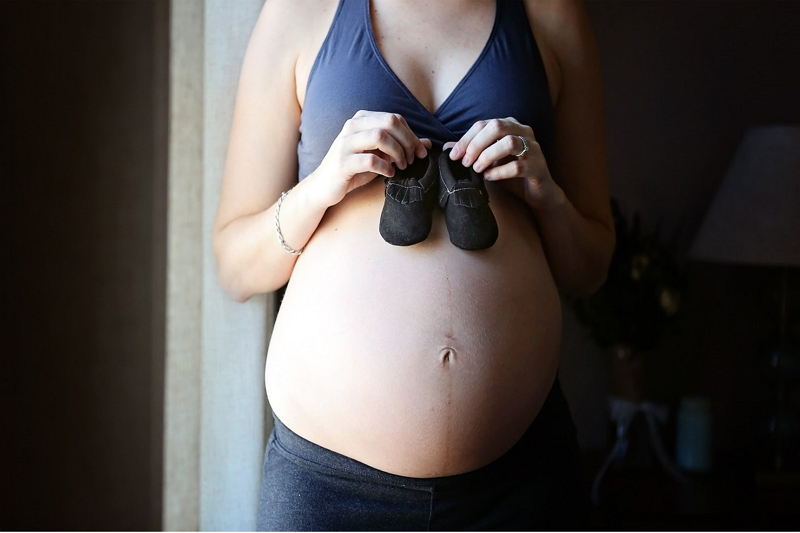A lot of pregnant do not know the best time to take maternity shoots. Finding the right timing and place for maternity-related pictures can be a daunting task. However, to make things a bit easier, we have prepared the article. In this blog post, we will talk about When to take maternity pics.
When you’re in the second trimester and showing a bit; feeling like yourself again after morning sickness has passed; at 20 weeks for your bump’s baby book photoshoot (the due date is typically two or three days before that).

Ways to Take Maternity Pictures: with a shirt on and off (to show off your belly); in different poses including hands-on-hips and arms around one another; outside if the weather allows it!
Whether you choose studio lighting or natural light, make sure you pay attention to shutter speed — underexposed images can cause too much noise when they’re edited. Also, avoid harsh shadows by making sure there isn’t anything directly behind you.
Do I get paid for additional maternity leave?
This is a very common question that many new moms have when they are expecting. The answer to this question varies depending on how long you worked for your employer before taking maternity leave, and what state you work in.
Who will pay salary during maternity leave?
Maternity leave is a requirement in most workplaces. Usually, this leave lasts for about two months after childbirth and mothers can receive some type of salary during that time.
While the amount varies from one workplace to another, there are some commonalities between them on who will pay maternity benefits while women are out of work on their break.
In general, employers only have to offer these kinds of leaves if they already provide it as an option or policy- however; if employees want longer than what’s offered by their company then they might need to look into other options like hiring someone else temporarily (like an intern) or even paying themselves less money until the mother returns to work.
However; many companies don’t require any kind of leave because they might provide a low-cost benefit for mothers who are taking maternity leaves.
Is maternity pay paid by the employer or government?
While maternity leave is not a right, it has been available since the 1930s. In 1993, the number of paid weeks was extended from six to twelve and in 1998, women were granted an additional eight weeks for pregnancy disability due to complications or her child’s birth, known as parental leave. Many countries also provide paternity leaves that entitle men to take time off around their baby’s arrival too.
While some companies offer full pay during maternity leave regardless of status (employee vs contractor), others only do so if you are classified as an employee who will be returning after your break period ends.
The Family Medical Leave Act provides up to 12 weeks of unpaid job-protected medical leave annually regardless of company size but does not require employers with 50 or more employees to offer paid leave.
What is statutory maternity pay and who pays it?
SMP is paid for a certain number of weeks to mothers who meet the eligibility criteria. Eligibility depends on how long you have worked and the amount of money that you earn, as well as other factors such as your age.
SMP can be claimed by both (full-time) employees and (part-time) workers who are not employed but do some work or run their own business part-time; however, if they’re self-employed then they must pay Class One NI contributions throughout the qualifying period to make sure they don’t lose any State Pension entitlement.
It’s also important to know whether maternity allowance might be more suitable than statutory maternity pay, especially if you’re self-employed or don’t qualify for it because you only work part-time.
What is the difference between ordinary and statutory maternity pay?
Ordinary maternity pay is paid for a maximum of 39 weeks. The statutory rate is 90% of your average weekly earnings, but it will be capped at £139.58 per week from April 2018 – this amount may change in future years based on the government’s annual uprating decision.
This means that you could lose some or all of your ordinary Maternity Pay during the first two weeks as they are included within those 39 weeks and not counted separately as part of SMP payments. You must have been employed by the same employer before becoming pregnant to qualify for either type of maternity pay.
For many people, their MPP takes them right through till around 26-27th/28th months after having your baby so it’s very useful to have a decent maternity package to help with your childcare costs.
It is also worth noting that you can only get statutory shared parental pay if the mother has returned to work or will be going back within 26 weeks of having their baby at least some of the time.
Also, for them to qualify they must share responsibility for caring for the child and not live away from home more than an hour each way when working/working part-time (e.g., commuting).
All parents must understand what rights both mums and dads have related to their employment during pregnancy as well as after birth when it comes to taking leave so let’s start by looking at Maternity Leave which allows mothers up to 52 weeks of paid leave.
Maternity Leave is available to all mothers whether their baby was planned or unplanned and the mother can start taking it up until her due date (or within 52 weeks after giving birth).
This time off work is normally taken in blocks of one week at a time, but some employers allow mums more flexibility than this while others expect them back on the job by the end of maternity leave so definitely check your contract with your HR Department before you plan out when you’ll take your Maternity Time Off Work.
